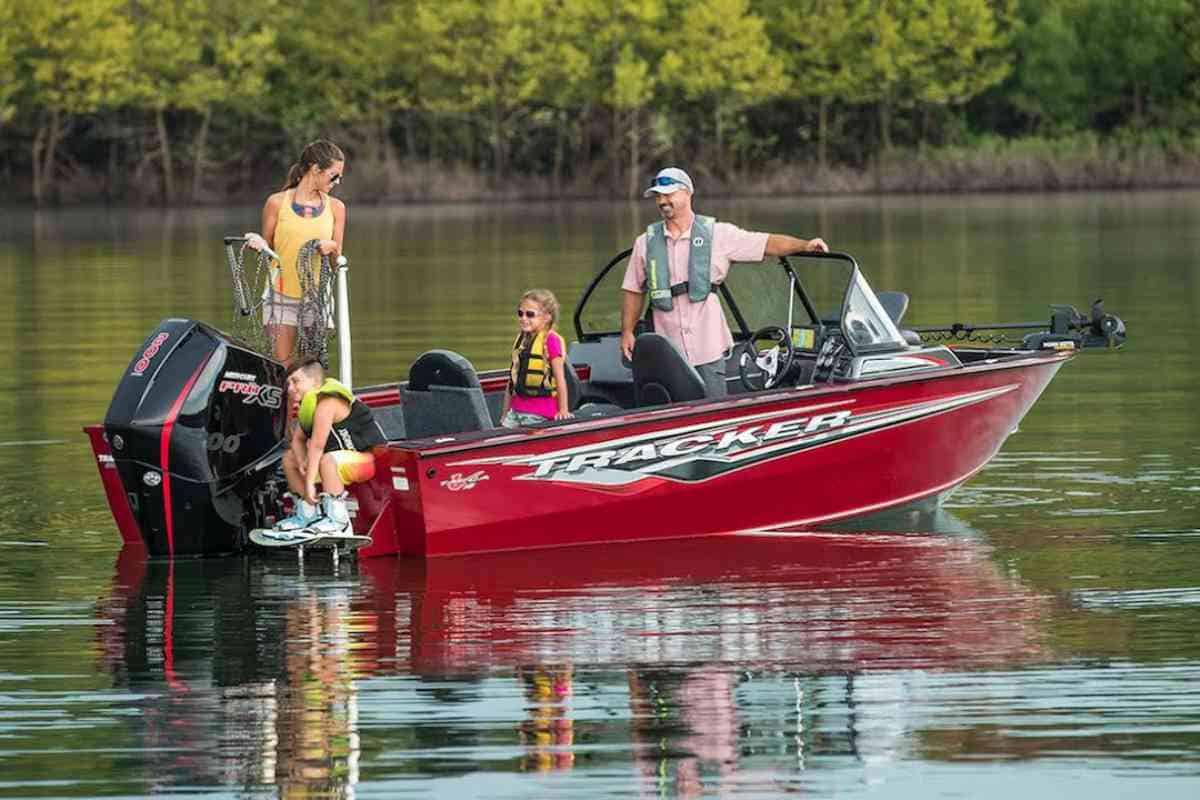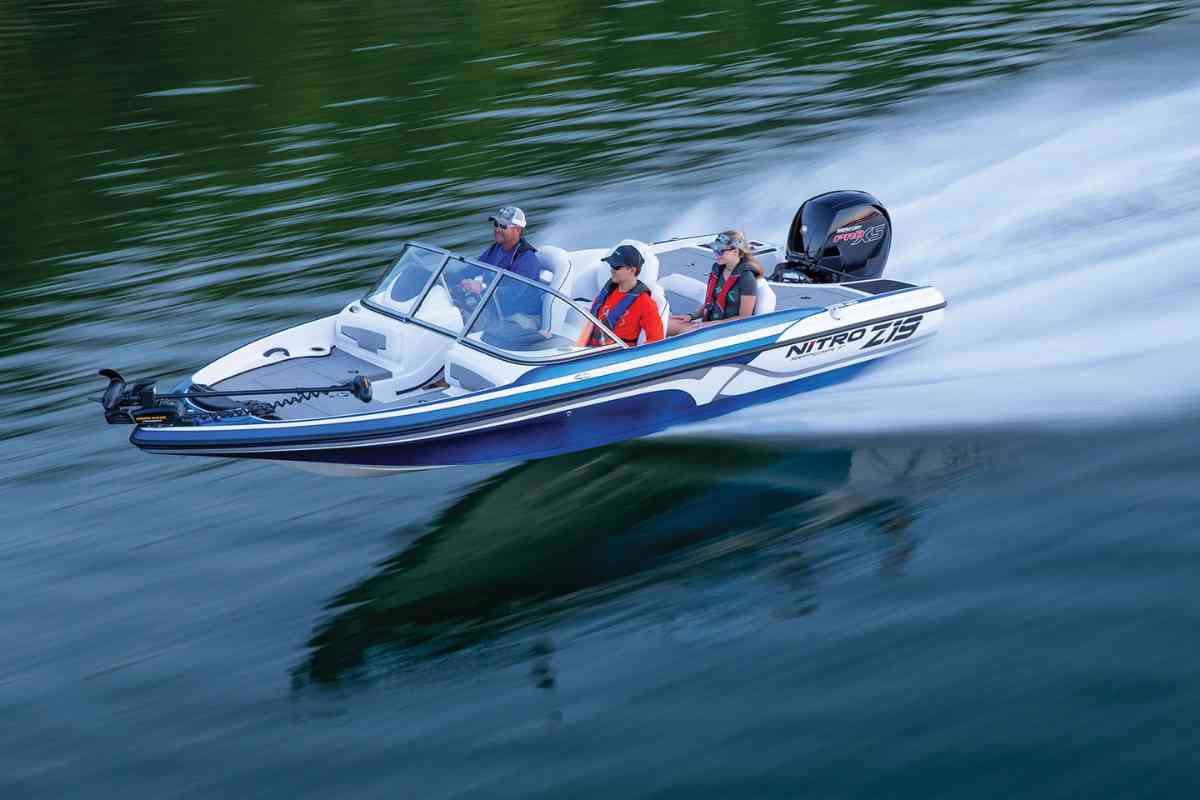Bass Boat Weight Capacity: What You Need to Know
Bass fishing is a popular recreational activity enjoyed by many anglers. However, before hitting the water, it is important to know the weight capacity of your bass fishing boat. The weight capacity refers to the maximum amount of weight that a boat can safely carry, including passengers, gear, and equipment.

What’s the average weight capacity of a bass boat?
The average weight capacity of a bass boat is around 1,500-2,000 pounds, depending on a number of factors. Some of the most popular bass boat models and their maximum weight capacities are listed below:
- Bass Tracker Pro 170: 800 lbs
- Bass Tracker Classic XL: 1,100 lbs
- Nitro ZV19 Sport: 1,600 lbs
- Ranger Z521L: 1,800 lbs
- Nitro Z20: 1,900 lbs
- Ranger Z521L: 2,200 lbs
Exceeding the weight capacity of a boat can lead to dangerous situations, such as instability, swamping, or even sinking. It can also result in fines or legal consequences.
Therefore, understanding the weight capacity of your bass boat is crucial for both safety and compliance purposes.
In this article, we will discuss the importance of knowing your bass boat’s weight capacity, how to calculate it, and what factors can affect it. We will also provide some tips on how to stay within the weight limit and ensure a safe and enjoyable fishing experience.
Understanding Bass Boat Weight Capacity
Bass boats are designed to be lightweight, fast, and nimble on the water. However, every boat has a weight capacity that you need to keep in mind when loading it up with gear, the number of people onboard, fuel weight, and other items. Understanding the weight capacity of your bass boat is essential to ensure that you operate it safely and efficiently.
The weight capacity of a bass boat is the maximum amount of weight that it can safely carry without compromising its stability, performance, and safety. This weight includes everything that you load onto the boat, including people, fuel, gear, and any other items that you bring along.
Exceeding the weight capacity of your bass boat can cause several problems, including reduced speed and maneuverability, decreased fuel efficiency, and increased risk of capsizing or sinking.
It’s crucial to stay within the weight limits specified by the manufacturer to ensure that you have a safe and enjoyable boating experience.
When determining the weight capacity of your bass boat, it’s essential to consider the weight of everything that you plan to bring on board. This includes not only the weight of your passengers and gear and bass fishing electronic accessories but also the weight of your fuel and any other items that you plan to carry.

Some manufacturers provide weight capacity charts that show the maximum weight that their boats can carry.
These charts typically include information on the maximum weight of passengers, gear, and fuel that the boat can safely handle. It’s essential to consult these charts before loading up your boat to ensure that you stay within the recommended weight limits.
It’s also important to note that the weight capacity of your bass boat can vary depending on the water conditions and your level of experience as a boater. For example, if you’re operating your boat in rough waters or strong currents, you may need to reduce the weight that you carry to maintain stability and control.
Overall, understanding the weight capacity of your bass boat is essential to ensure that you operate it safely and efficiently. By staying within the recommended weight limits and consulting weight capacity charts, you can enjoy a safe and enjoyable boating experience.
| Bass Boat Model | Weight Capacity |
|---|---|
| Bass Tracker Classic XL | 1,100 lbs |
| Ranger Z521L | 2,200 lbs |
| Nitro ZV19 Sport | 1,600 lbs |
The table above shows the weight capacity of three popular bass boat models. As you can see, weight capacity can vary significantly depending on the size and design of the boat. It’s crucial to consult the weight capacity charts provided by the manufacturer to ensure that you stay within the recommended weight limits and operate your boat safely and efficiently.
Factors Affecting Bass Boat Weight Capacity
When it comes to buying a bass boat, it’s important to consider the weight capacity. The weight capacity of a boat is the maximum weight it can carry, including passengers, gear, and fuel. Exceeding the weight capacity can lead to serious safety issues, so it’s crucial to understand the factors that affect the weight capacity of a bass boat.
Here are some of the key factors that can affect the weight capacity of a bass boat:
- Boat size: Generally, larger boats have a higher weight capacity than smaller boats. This is because larger boats have more buoyancy, which allows them to support more weight.
- Hull design: The shape and design of the hull can also affect the weight capacity of a boat. Boats with a wider beam (the width of the boat at its widest point) tend to have a higher weight capacity than boats with a narrower beam. Additionally, boats with a deeper draft (the distance from the waterline to the bottom of the boat) tend to have a higher weight capacity than boats with a shallower draft.
- Material: The material that a boat is made from can also affect its weight capacity. Boats made from lightweight materials like aluminum or fiberglass tend to have a higher weight capacity than boats made from heavier materials like steel.
- Motor size: The size and power of the motor can also affect the weight capacity of a bass boat. A larger motor can propel a heavier boat, but it can also add weight to the boat itself.

It’s important to note that weight capacity is not the same as maximum horsepower. While a boat may be rated for a certain horsepower, exceeding the weight capacity can still be dangerous.
In fact, exceeding the weight capacity can actually reduce the maximum speed and performance of the boat.
When shopping for a bass boat, it’s important to consider all of these factors and choose a boat with a weight capacity that meets your needs. By doing so, you can ensure a safe and enjoyable boating experience.
How to Determine Your Bass Boat’s Weight Capacity
Determining your bass boat’s weight capacity is crucial for a safe and enjoyable fishing experience. Here are some steps to follow:
- Check the manufacturer’s specifications: The manufacturer’s manual or website should have information on the boat’s weight capacity. This information will give you a general idea of how much weight your boat can handle.
- Consider the boat’s design: The design of your boat can also affect its weight capacity. Boats with a wider beam and deeper hulls can generally handle more weight than boats with a narrower beam and shallower hulls.
- Factor in gear and passengers: The weight capacity of your boat should include the weight of all passengers, gear, and equipment on board. Make sure to calculate the weight of fuel, fishing equipment, coolers, and any other items you plan to bring on board.
- Be aware of weight distribution: The weight distribution of your boat can also affect its weight capacity. Make sure to evenly distribute weight throughout the boat to avoid overloading one side or the other.
It’s important to note that exceeding your boat’s weight capacity can lead to instability and safety hazards. Always err on the side of caution and stay within the recommended weight limits.
| Boat Model | Weight Capacity | Beam Width | Hull Depth |
|---|---|---|---|
| Bass Tracker Pro 170 | 800 lbs | 6′ 6″ | 1′ 4″ |
| Ranger Z521L | 1,800 lbs | 7′ 11″ | 1′ 9″ |
| Nitro Z20 | 1,900 lbs | 7′ 11″ | 1′ 8″ |
As you can see from the comparison table above, different boat models have varying weight capacities. It’s important to know your boat’s weight capacity to ensure a safe and enjoyable fishing experience.
Tips for Staying Within Your Bass Boat’s Weight Capacity

One of the most important things to keep in mind when using a bass boat is to stay within its weight capacity.
Overloading your boat can be dangerous and can put you and your passengers at risk. Here are some tips to help you stay within your bass boat’s weight capacity:
- Know your boat’s weight capacity: Check your boat’s manual or look for a plate on the boat that lists the maximum weight capacity. Make sure you know this number before you start loading up your boat.
- Consider the weight of your gear: Don’t forget to factor in the weight of your fishing gear, coolers, and any other equipment you’ll be bringing with you.
- Distribute weight evenly: Make sure to distribute weight evenly throughout your boat. Don’t overload one side or the other, as this can cause your boat to tip over.
- Leave room for passengers: Remember to leave enough room for your passengers. Don’t overload your boat with gear to the point where there’s no room for anyone to sit.
It’s also important to note that the weight capacity of your boat can vary depending on the conditions you’ll be boating in.
For example, if you’ll be boating in rough water or high winds, you may need to reduce your load to stay within the safe weight capacity of your boat.
Here’s a comparison table to help illustrate the weight capacity of some popular bass boats:
| Boat Model | Weight Capacity |
|---|---|
| Bass Tracker Classic XL | 1,050 lbs |
| Ranger Z521L | 1,800 lbs |
| Nitro Z19 | 1,500 lbs |
Remember, staying within your boat’s weight capacity is crucial for your safety and the safety of your passengers. By following these tips and being mindful of the weight you’re carrying, you can enjoy a safe and enjoyable day on the water.
Conclusion
When it comes to purchasing a bass boat, it is important to consider the weight capacity of the boat. The weight capacity determines how much weight the boat can safely carry, including passengers, gear (your boat battery and fuel tank add up quickly), and equipment. Exceeding the weight capacity can lead to dangerous situations, such as capsizing or sinking.
After conducting research and analyzing data, it is clear that weight capacity varies greatly among different bass boat models.
It is important to carefully review the weight capacity specifications provided by the manufacturer before making a purchase. Additionally, it is important to consider the weight of all passengers, gear, and equipment that will be on board to ensure that the weight capacity is not exceeded.
One important factor to consider when looking at weight capacity is the boat’s length. Generally, longer boats have a higher weight capacity than shorter boats. However, it is important to note that the boat’s length is not always the case and that boat’s capacity can vary greatly among boats of the same length.
Overall, it is important to prioritize safety when selecting a bass boat. Carefully review the weight capacity specifications and consider all factors that will contribute to the weight on board. By doing so, you can ensure a safe and enjoyable boating experience.
